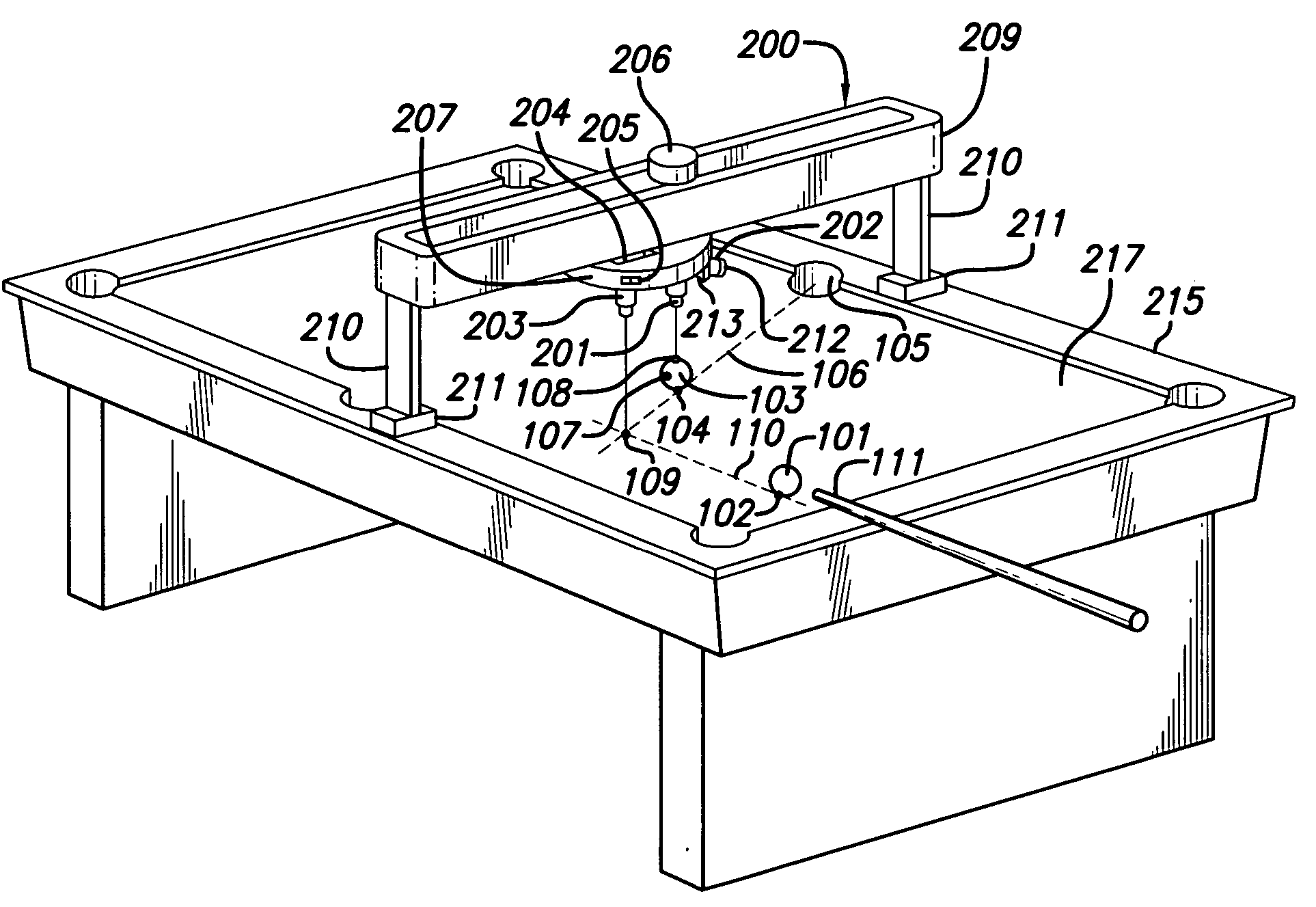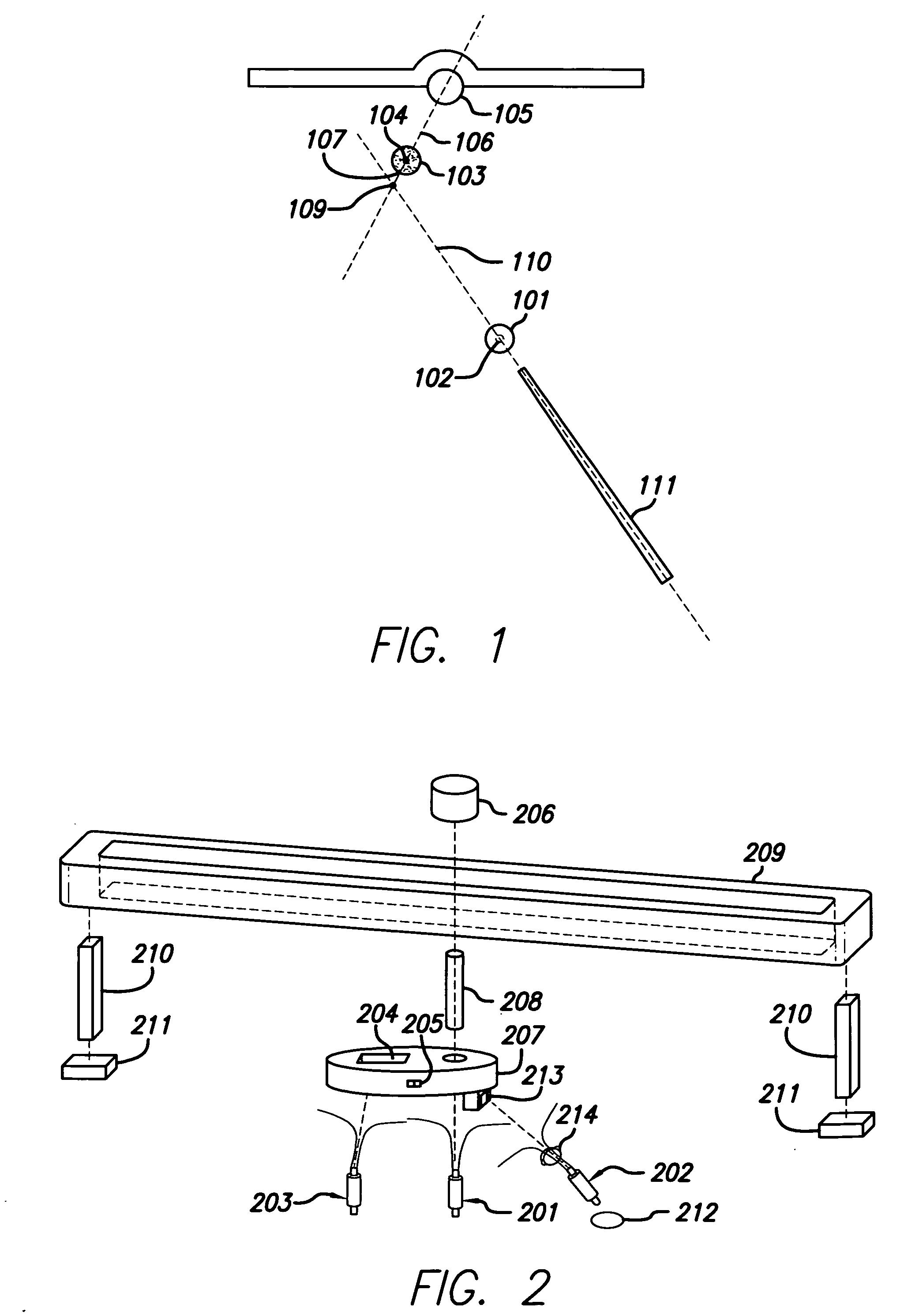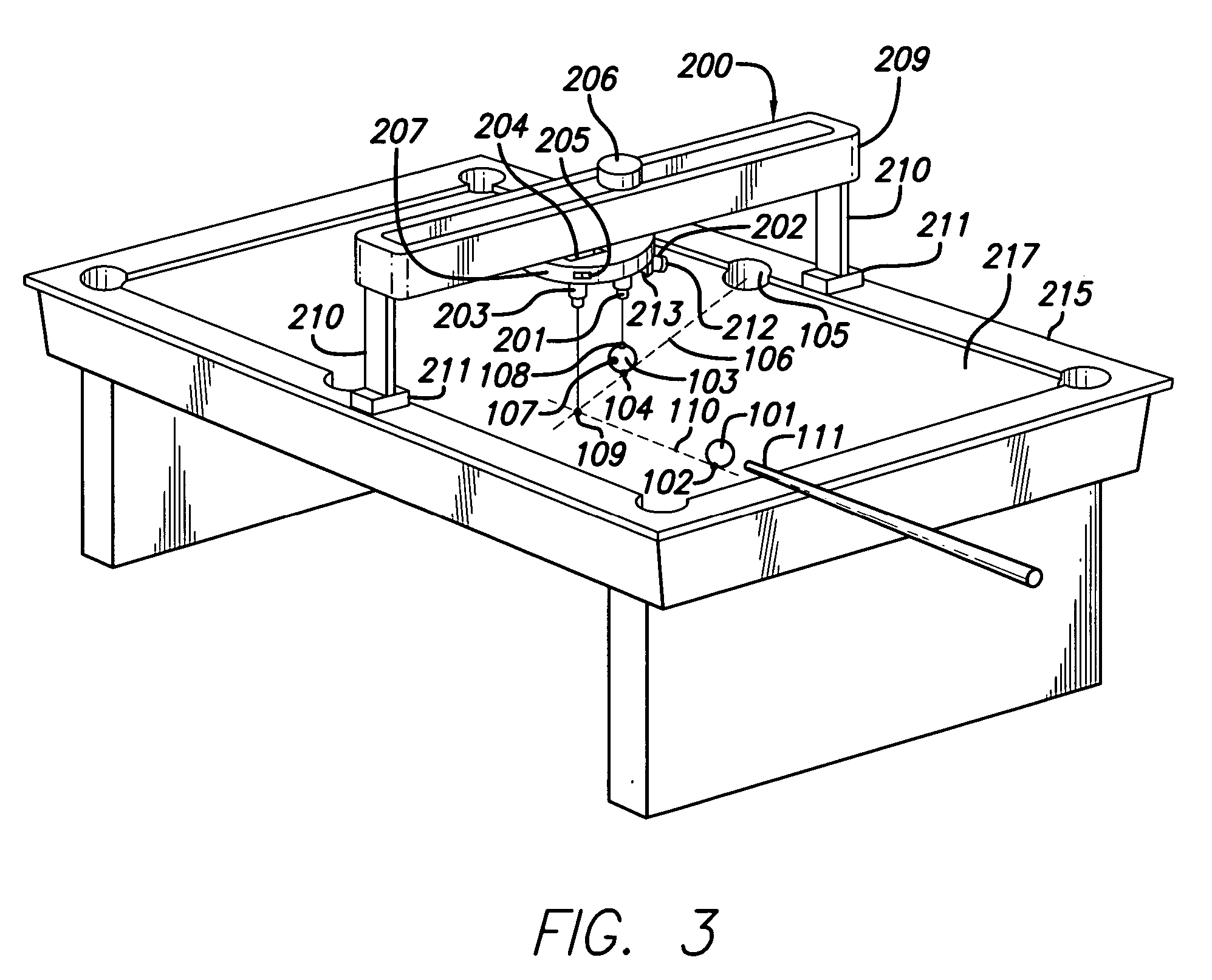Laser light aiming trainer for the game of pool and similar games
a trainer and laser light technology, applied in the field of pocket billiards, can solve the problems of difficulty in visualizing the geometry of the shot, the cue stick is not easy to hold, and the ball is not easy to catch, so as to improve the play
- Summary
- Abstract
- Description
- Claims
- Application Information
AI Technical Summary
Benefits of technology
Problems solved by technology
Method used
Image
Examples
Embodiment Construction
[0020] The present invention makes visible certain geometric properties implicit in aiming correctly in the game of billiards or the like. Referring to FIG. 1, a player uses a cue stick 111 to strike a cue ball 101 so that the cue ball 101 rolls across the playing surface and strikes an object ball 103, knocking the object ball 103 toward a pocket 105. Sometimes the shooter desires to knock an object ball toward the rail or another object ball, but the present invention is primarily designed for those shots where the shooter desires to pocket the object ball, as rail shots and combination shots involve additional visualization issues. In order for the object ball 103 to be knocked toward the pocket 105, the cue ball 101 must strike the object ball 103 at a point of contact 107, on the periphery thereof, which is that end of the diameter of the object ball 103 that is aligned with the direction of desired travel 106. Aiming involves sighting an aim line 110 between the center of the ...
PUM
 Login to View More
Login to View More Abstract
Description
Claims
Application Information
 Login to View More
Login to View More - R&D
- Intellectual Property
- Life Sciences
- Materials
- Tech Scout
- Unparalleled Data Quality
- Higher Quality Content
- 60% Fewer Hallucinations
Browse by: Latest US Patents, China's latest patents, Technical Efficacy Thesaurus, Application Domain, Technology Topic, Popular Technical Reports.
© 2025 PatSnap. All rights reserved.Legal|Privacy policy|Modern Slavery Act Transparency Statement|Sitemap|About US| Contact US: help@patsnap.com



